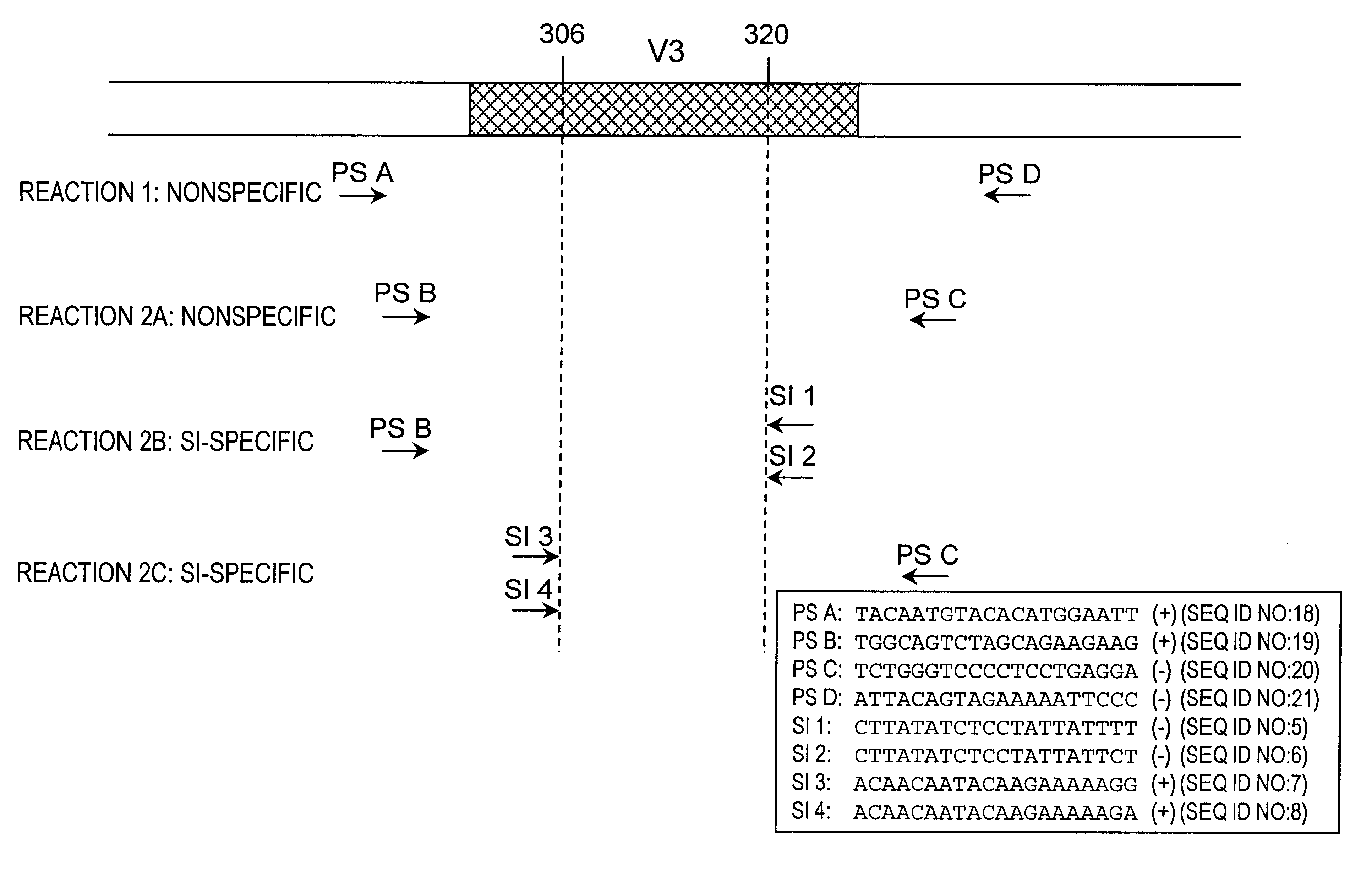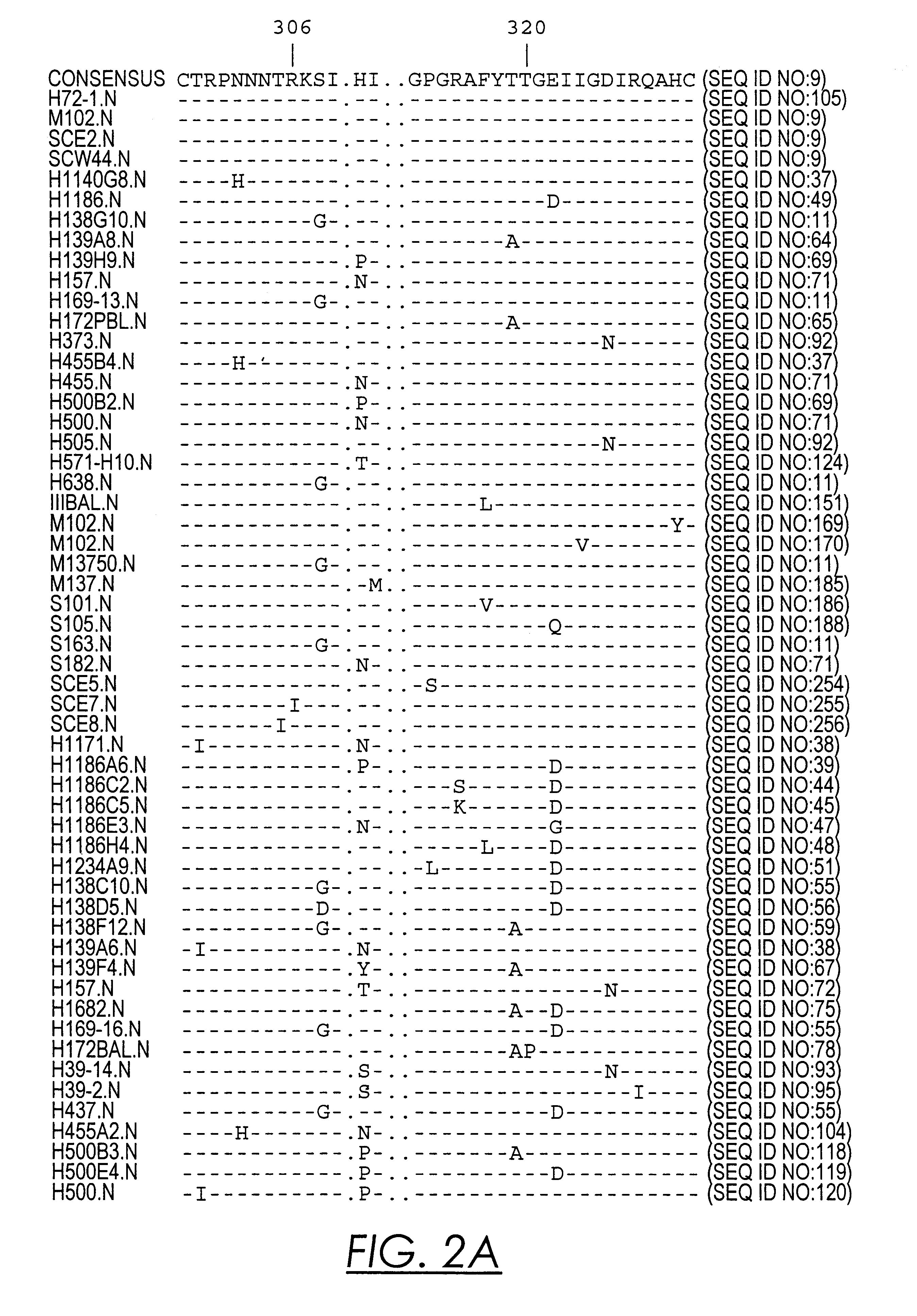Nucleic acids and methods for the discrimination between syncytium inducing and non syncytium inducing variants of the human immunodeficiency virus
a human immunodeficiency virus and syncytium inducing technology, applied in the field of nucleic acids and methods for discriminating between syncytium inducing and non-syncytium inducing variants of the human immunodeficiency virus, can solve the problems of affecting the clinical outcome of patients, requiring the use of purified lymphocytes, and less applicable to whole blood cell samples or serum and plasma samples
- Summary
- Abstract
- Description
- Claims
- Application Information
AI Technical Summary
Problems solved by technology
Method used
Image
Examples
Embodiment Construction
The limited phenotype-restricted DNA sequence variation at positions 306 and 320 was used to design phenotype-specific oligonucleotides (primers) for selective amplification of SI V3 sequences by PCR (FIG. 3). 2 oligonucleotide primers spanning position 306 in V3 were synthesized, that had either a G or A at the ultimate 3' position. Since all NSI isolates harbour either T or C at this position and mismatches at the extreme 3' end of PCR primers hamper PCR amplification, use of these primers would not allow amplification of NSI V3 sequences by PCR. Similarly, 2 oligonucleotide primers spanning position 320 in V3 were designed oligonucleotides for selective amplification of SI isolates that have an Arginine or Lysine residue at position 320 should anneal to either AA or AG at the ultimate 3' position. All 4 20-mer oligonucleotides are designed to have full similarity to the B-type consensus V3 DNA sequence next to these SI-specific substitutions at the 3' ends. The 4 SI-specific prim...
PUM
| Property | Measurement | Unit |
|---|---|---|
| Time | aaaaa | aaaaa |
| Fraction | aaaaa | aaaaa |
| Electric potential / voltage | aaaaa | aaaaa |
Abstract
Description
Claims
Application Information
 Login to View More
Login to View More - R&D
- Intellectual Property
- Life Sciences
- Materials
- Tech Scout
- Unparalleled Data Quality
- Higher Quality Content
- 60% Fewer Hallucinations
Browse by: Latest US Patents, China's latest patents, Technical Efficacy Thesaurus, Application Domain, Technology Topic, Popular Technical Reports.
© 2025 PatSnap. All rights reserved.Legal|Privacy policy|Modern Slavery Act Transparency Statement|Sitemap|About US| Contact US: help@patsnap.com



